Two weeks ago I discovered I can still be awe-struck and rendered speechless. Really, I’m a bit embarrassed about this. While driving down to the Las Vegas Strip, at the worst possible time on a Friday afternoon, my initial thoughts waggled between, “I’m so excited! I’m so excited!” and “Mary, act your age.” I gave into the excited-waggle because I was going to meet one of my American heroes. I’d had a crush on this guy for more than 40 years.
To be truthful, his credentials are not sterling. He’s been arrested more than 40 times. His parents were poor, struggling to raise 10 children, but scrambled to put together his college money. How did he show his graditude? As a freshman, he ditched classes and let assignments slide, to focus on extra-curricular activities.
He’s had his skull fractured, been beaten silly, physically attacked numerous times and never even defended himself. No wonder that, as a kid, he was refused a card at his county library.
Yeah, he’s quite a man. HIs name is John Lewis and I was finally going to shake his hand.
In his book, “Why Courage Matters”, Arizona Senator John McCain (who I also still consider an American hero), wrote, “I’ve seen courage in action on many occasions. I can’t say I’ve seen anyone possess more of it, and use it for any better purpose and to any greater effect, than John Lewis.”
On that Friday afternoon, I was one of 500 guests invited to the Mirage by Vegas PBS/MGM Resorts to preview Freedom Riders, an award-winning “American Experience” documentary which premiers May 16 on your local PBS station. And, one of those original Riders, John Lewis, was joining us.
The Mirage, a casino-resort recognized more for its erupting volcano, white tigers and slot machines, seemed a surreal setting. We were there to see a film about a 6-month journey of non-violent activism that arguably was the impetus that finally galvanized this country into civll rights legislation. What is even more surreal is that many young Americans, it seems, have not heard of these Riders nor understand their contribution. That’s a shame.
Lewis, now a Congressman representing Georgia, was one of those 13 original Freedom Riders. At the time, a 21-year-old freshman at a Nashville theological seminary, he volunteered, along with others, to buy a ticket, board a Greyhound and ride from Washington D.C. to New Orleans. Easy enough, a bunch of young college kids, on a joyride, taking a break, sitting, eating and laughing together. Not so extraordinary by today’s standards, but remember, this was 1961 and some of Congressman Lewis’ friends were white. They were headed for the Deep South and those tickets reeked of Trouble.
Trouble first surfaced in Rock Hill, South Carolina, where the Congressman was the first Rider assaulted. Although their activism was non-violent, their reception in southern cities was not. In a six-month period more than 400 Americans, black and white, risked life and limb to deliberately violate the laws of Jim Crow. Some were killed. The documentary relates this story, better than I.
When Lewis was boarding that bus, I was still in high school, more concerned about a prom date than who drank at my water fountain. That all changed when, following graduation, I left my rural Iowa community, all white, to attend Florida State University, all white, in Tallahassee. (To FSU’s credit, a sculpture,”Integration”, was dedicated in 2004, paying tribute to the first African American students who integrated the university in the late-Sixties.)
Those were turbulent times at universities and FSU was no exception. What is most seared to my soul, however, are visions of Bloody Sunday, March 7,1965, 600 people crossing the Edmund Pettus Bridge in Selma, enroute to Montgomery. That attempt and the accompanying widely-televised brutality to stop it, packed a wallop to this nation’s innards. (Remember, we were not yet accustomed to brutality televised into our living rooms.) Lewis, who got his skull fractured and still has the scars to prove it, gently asked this country how President Johnson could send troops to Vietnam and the Congo but not to Selma to protect people who “just want to vote.”
We heard him. Two weeks later, 300 marchers successfully crossed that same Selma bridge, with the crowd swelling to 25,000 by the time they ended their 50-mile walk to Montgomery. The Voting Rights Act was debated, passed and signed by President Lyndon Johnson on August 6, 1965.
John Lewis, who was just getting started, was already, to my mind, a brave man of heroic proportions.
After graduating from college and securing a good job with the Florida Department of Education, I had a front-row seat to integrating Florida public schools. Although I wish I could tell you I was effective, I was not. The task was difficult, hurtful, and frustrating. During this time, my husband was earning a doctorate in Black History, the Reconstruction Period, so I was always at the movement’s periphery, wide-eyed, supportive, but cautious. Although he and I later went our separate ways, we remained committed to raising our two daughters to be color-blind. I like to hope that was a worthwhile contribution to the Movement.
At the Mirage, I sat next to a young woman whose Grandfather, she proudly related “had marched with John Lewis in Jackson, Mississippi.” Throughout the film, during each incident or encounter, she kept repeating softly, “That’s right. That’s right.” She knew her history. I urge you and your friends to remember it also and watch this important documentary on your local PBS station next week.
While this is not a perfect nation by any means, we have made tremendous and commendable strides in being better. Columnist George Will just wrote a fine Birthday column entitled, “Considering what it means to be 70 years old” in which he writes,
“To be 70 is to have seen the nation put away the almost casual cruelty of racial segregation. And to have seen, in the emancipation — not too strong a term — of women, and in many other improvements, how this uniquely self-transforming nation decided to declare unthinkable many practices that not long ago were performed unthinkingly.”
Previewing “Freedom Riders” in the presence of John Lewis, is one of the great moments of my Life. I shook his hand. And, yes, I saw those Selma scars.


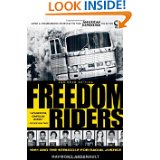
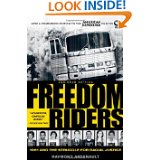
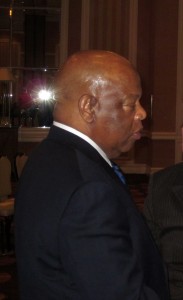
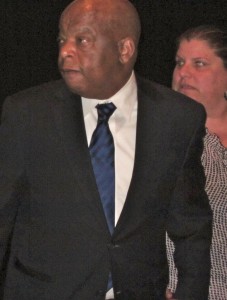
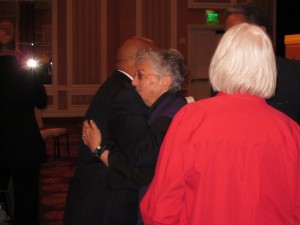
Just finished reading Warriors Don’t Cry…a 1st person account of one of the Little Rock Nine who first integrated Little Rock Central. What a story! Without these brave people breaking barriers and risking their lives, we would not be where we are today.
My sister, brother and I went to Little Rock Central High a few years later…we were all very moved by the book.
Thanks Mary for sharing your experience.
Donna, I just ordered “Warriors Don’t Cry” from Amazon. As usual, your reading suggestions are the best. If you recall, you were way ahead of the pack with Steig Larsson as well as “Persepolis” by Marjane Satrapi.